Complete Solutions to Problem of chapter CARBOXYLIC ACIDS AND THEIR DERIVATIVES of Class 12 book with complete answers and questions
| Class 12 | CHEMISTRY |
| Chapter | CARBOXYLIC ACIDS AND THEIR DERIVATIVES |
| OP TANDON | Problem |
| Number Of Questions | 17 |
| Academic Year | 2023-24 |
Convert acetic acid to propionic acid
View SolutionHow will you convert propionic acid to acetic acid ?
View SolutionAccount for the following:
(a) Boiling points of carboxylic acids are higher than those of corresponding alcohols.
(b) The C-O bond in R-COOH is shorter than in R-OH
(c ) Acetic acid in the vapour state has a molecule mass of 120.
View SolutionExplain: (a) Acetic Acid is a stronger acid than ethyl alcohol
(b) Trichloroacetic acid is a stronger acid than acetic acid.
View SolutionHow will you obtain?
(a) Butanoic acid from 1-bromopropane ( b) Propanoic acid from ethyne,
(c) 2-Methylbutanoic acidfrom butan-2-ol, ( d) Butanoic acid from ethyl bromide
View Solution(a) Write a note on Hell-Volhard-Zelinsky (HVZ) reaction.
(b) Write a short note on Koch reaction.
(c) Write a short note on Arndt-Eistert reaction
View SolutionArrange the following in order of increasing acidity:
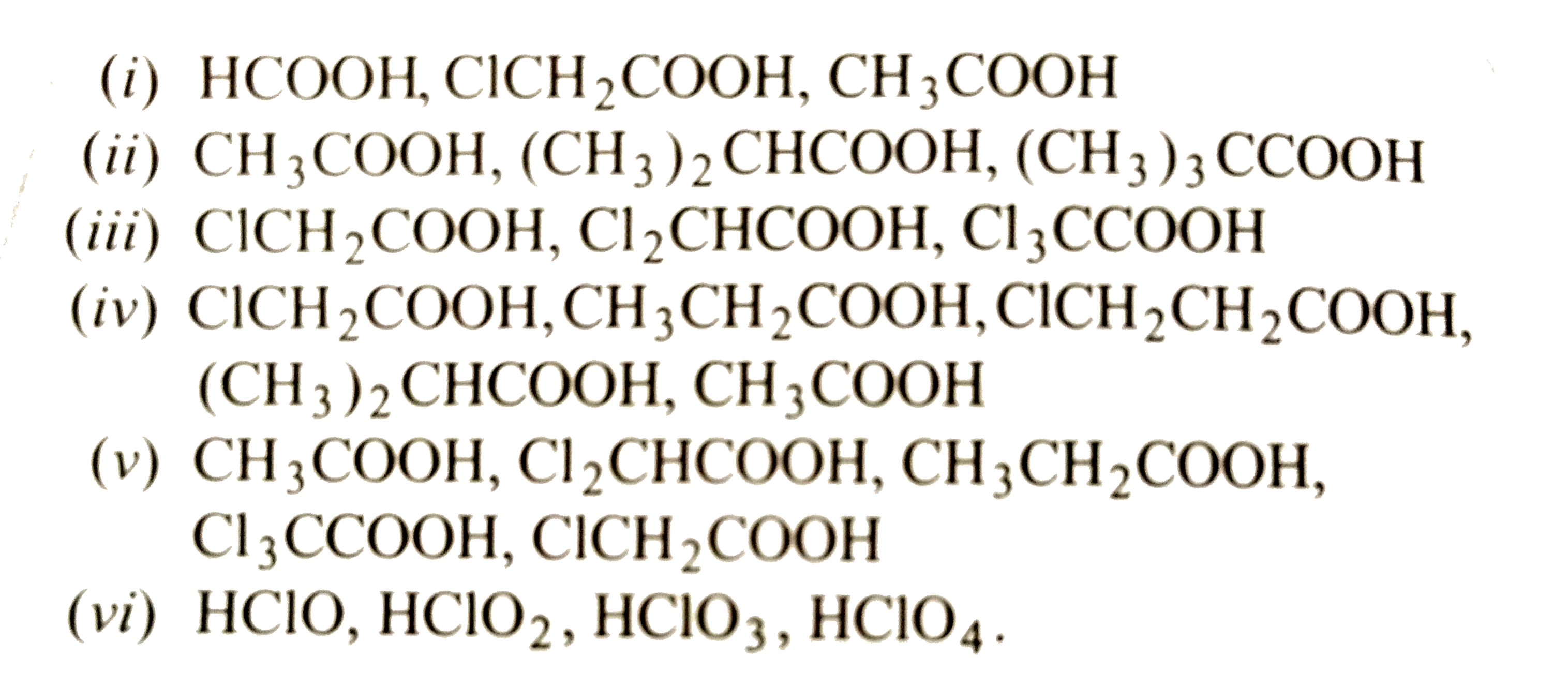
View SolutionExplain the mechanism of esterification carboxylic acids.
View SolutionExplain the following with proper reasoning:
(i) Although p-hydroxy benzoic acid is less acidic than benzoic acid but `alpha`-hydroxy benzoic acid (salicylic acid) is 15 times more acidic than benzoic acid.
(ii) Oxidation of toluene by acidic `KMnO_(4)` gives poor yield of benzoic acid while oxidation of `p-O_(2)NC_(6)H_(4)CH_(3)` gives good yield of p-nitrobenzoic acid.
View SolutionAcid-catalysed estrification of a carboxylic acid is shown below.
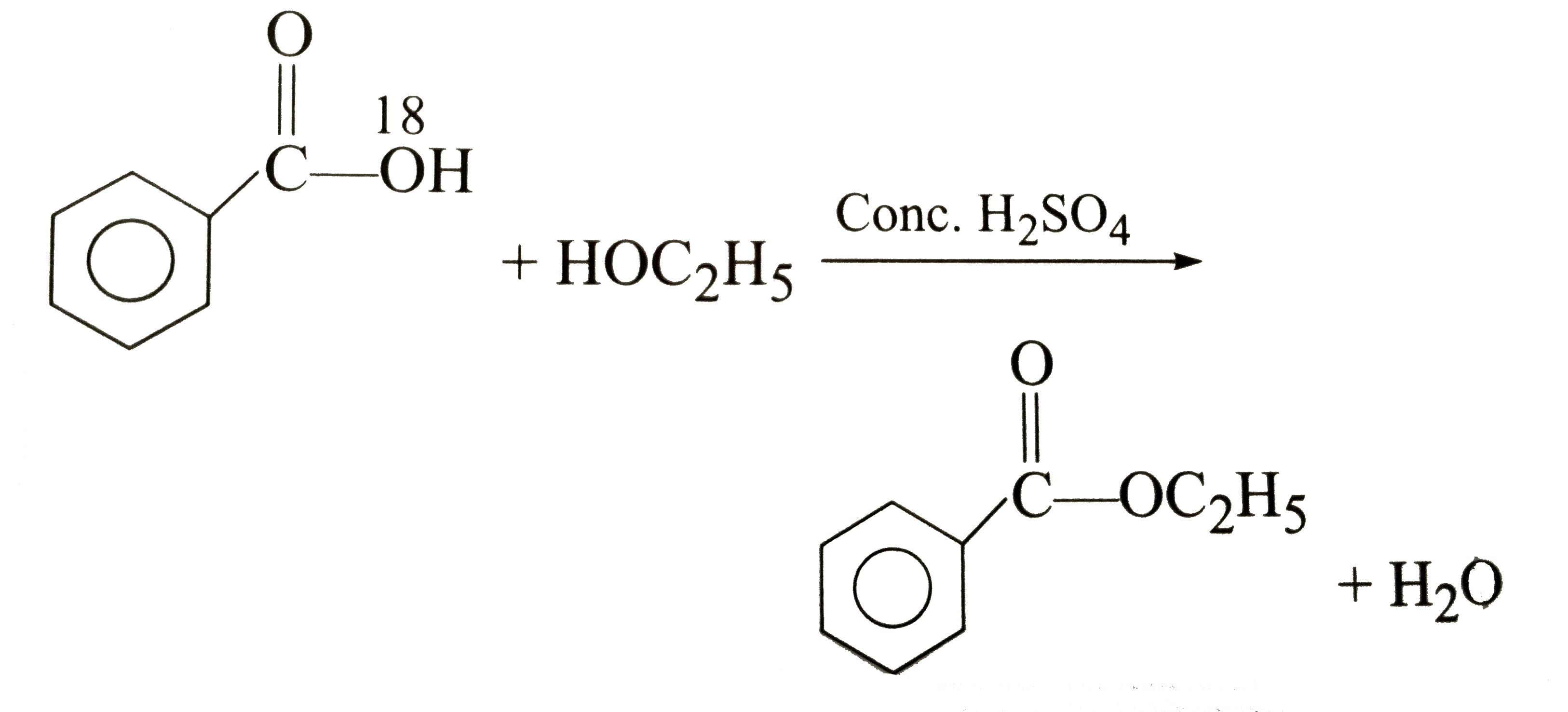
(i) What special name is given to this esterification reaction?
(ii) Trace the position of `O^(18)` of benzoic acid in the products formed.
(iii) Acid catalysed esterification is a substitution at the carbonyl carbon or at the oxygen of OH. Explain
View SolutionHow will you distinguish between:
(a) Formic acid and acetic acid.?
(b) Oxalic acid and acetic: acid?
(c) Succinic acid and oxalic acid?
View SolutionCompare the products formed on heating the following dicarboxylic acids:
(a) Oxalic acid, (b) Malanie acid, (c) Succinic acid, (d) Adipic acid
View SolutionUsing diazomethane `(CH_(2)N_(2))` and any other appropriate reagents how can R-COOH be converted into:
(i) `R-CH_(2)COOH` (b) `R-COCH_(2)Cl` (c ) `R-COCH_(2)NH_(2)` (d) `R-CH_(2)COOC_(2)H_(5)` (e ) `R-COCH_(2)OH`?
View SolutionGive the compounds containing either (C= C) or (`Cequiv C`) or a ketone from which isobutyric acid can be prepared in a better way.
View SolutionGive the products in the following reactions :
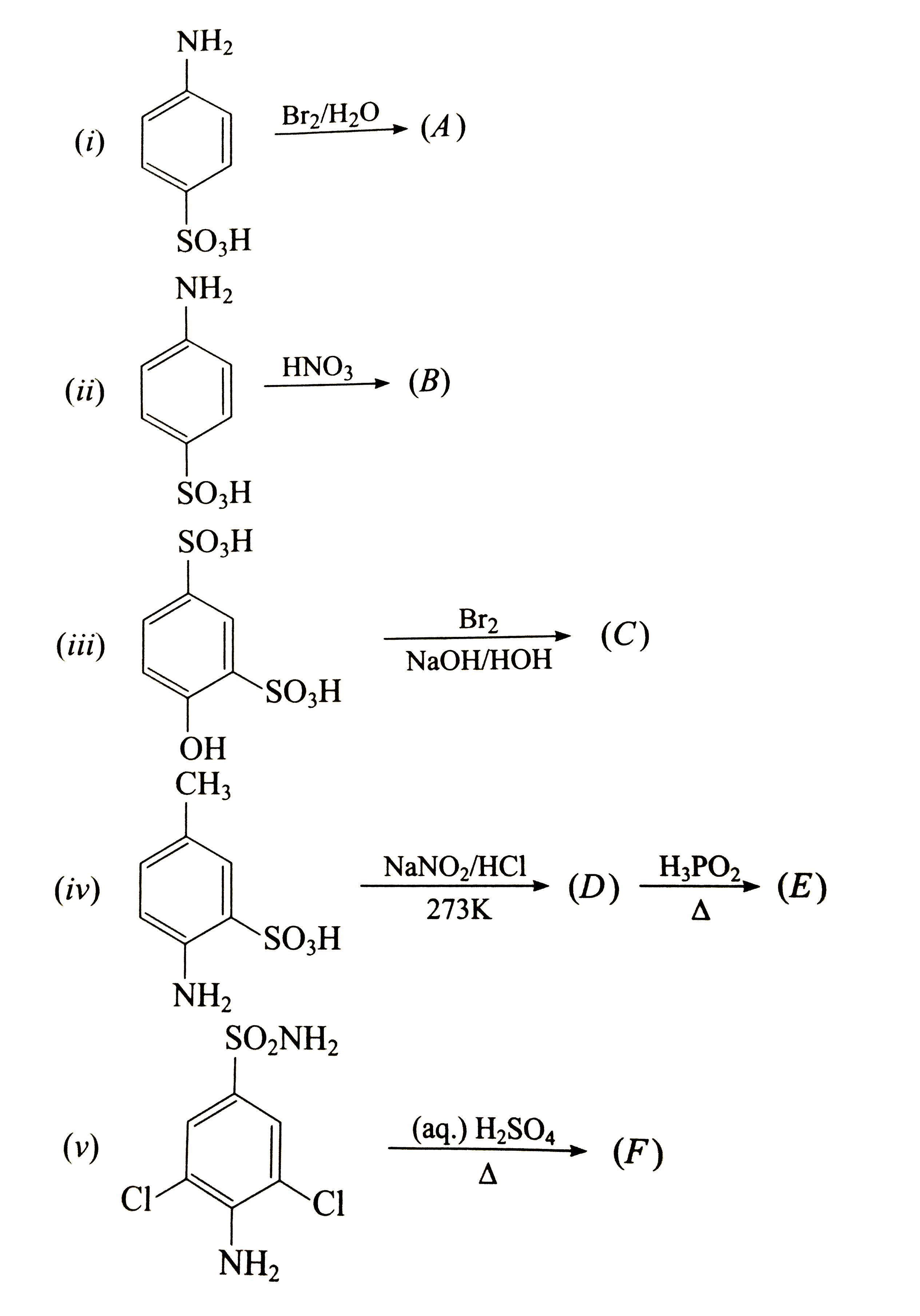
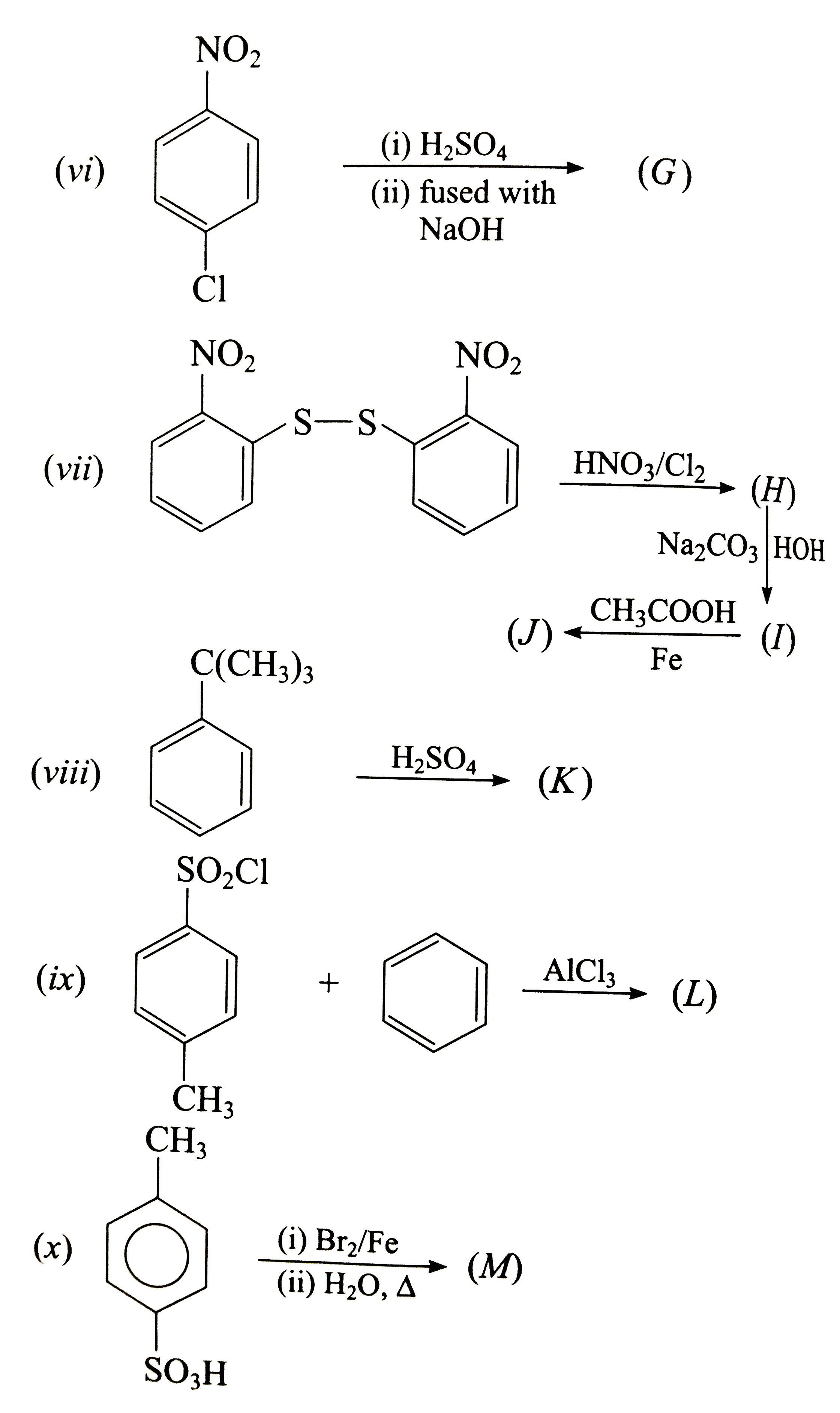
View SolutionCatalytic dehydrogenation of methyl cyclohexane, obtained from petroleum, gives a liquid which on treatment with chlorosulphonic acid at 370 K ylelds a mixture of two isomers (A) and (B), `C_(7)H_(7)SO_(2)CI`. The major isomer (A) reacts with ammonia to form (C), which on oxidation with permanganate gives compound (D), On heating, compound (D) gives a well known sweetening agent (E). The minor isomer (B) also reacts with ammonia to give a compound (F) which on treatment with NaOCI/NaOH gives an antiseptic (G). Compound (F) on reaction with `NaOCI//Cl_(2)` (excess) and fotlowed by oxidation gives a compound (H) used for sterilising drinking water Identify (A) lo (H).
View SolutionIn the following reactions :
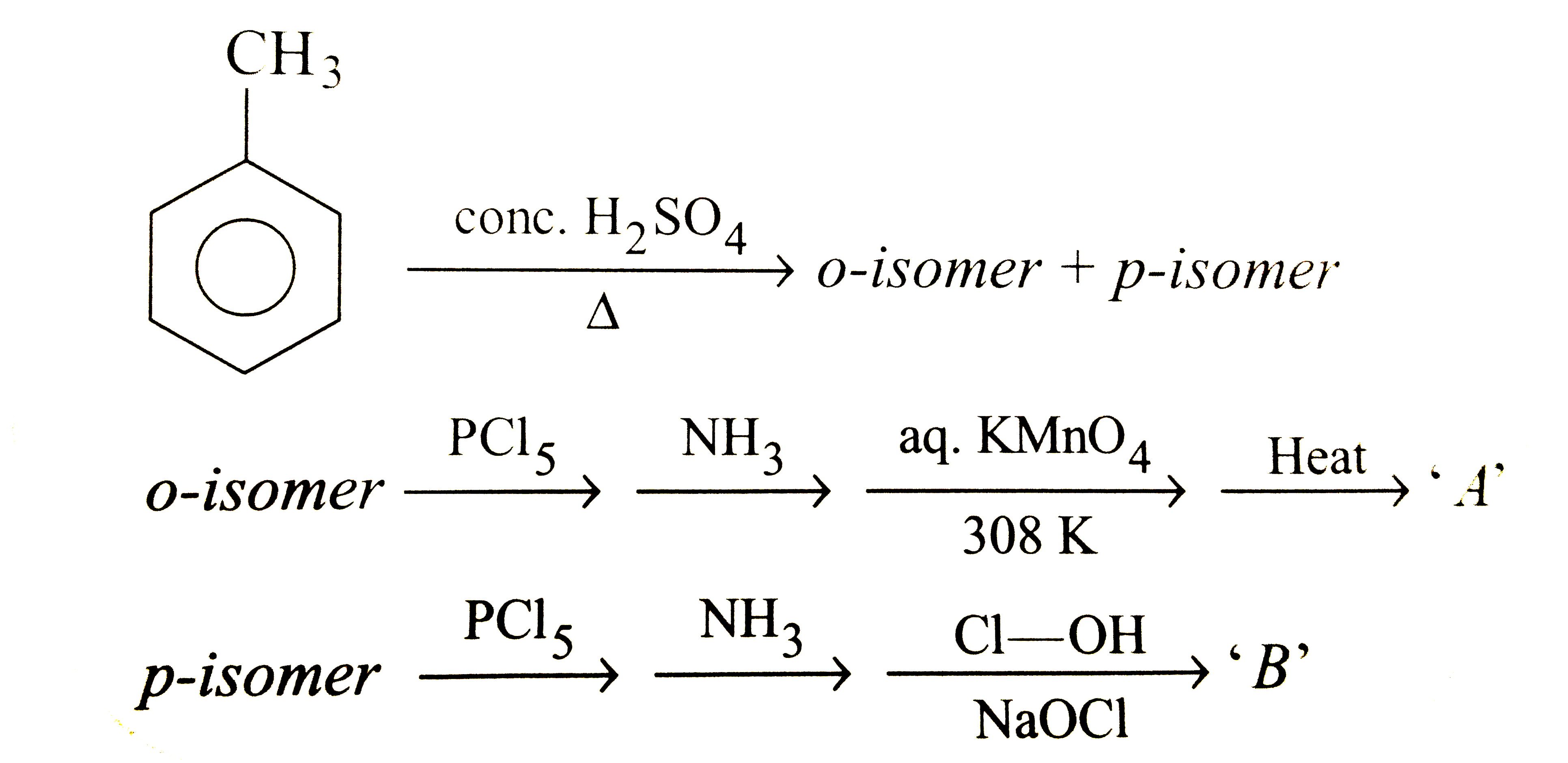
View Solution
Problem questions and complete solutions for chapter CARBOXYLIC ACIDS AND THEIR DERIVATIVES of G.R. BATHLA & SONS CHEMISTRY (HINGLISH) of Class 12